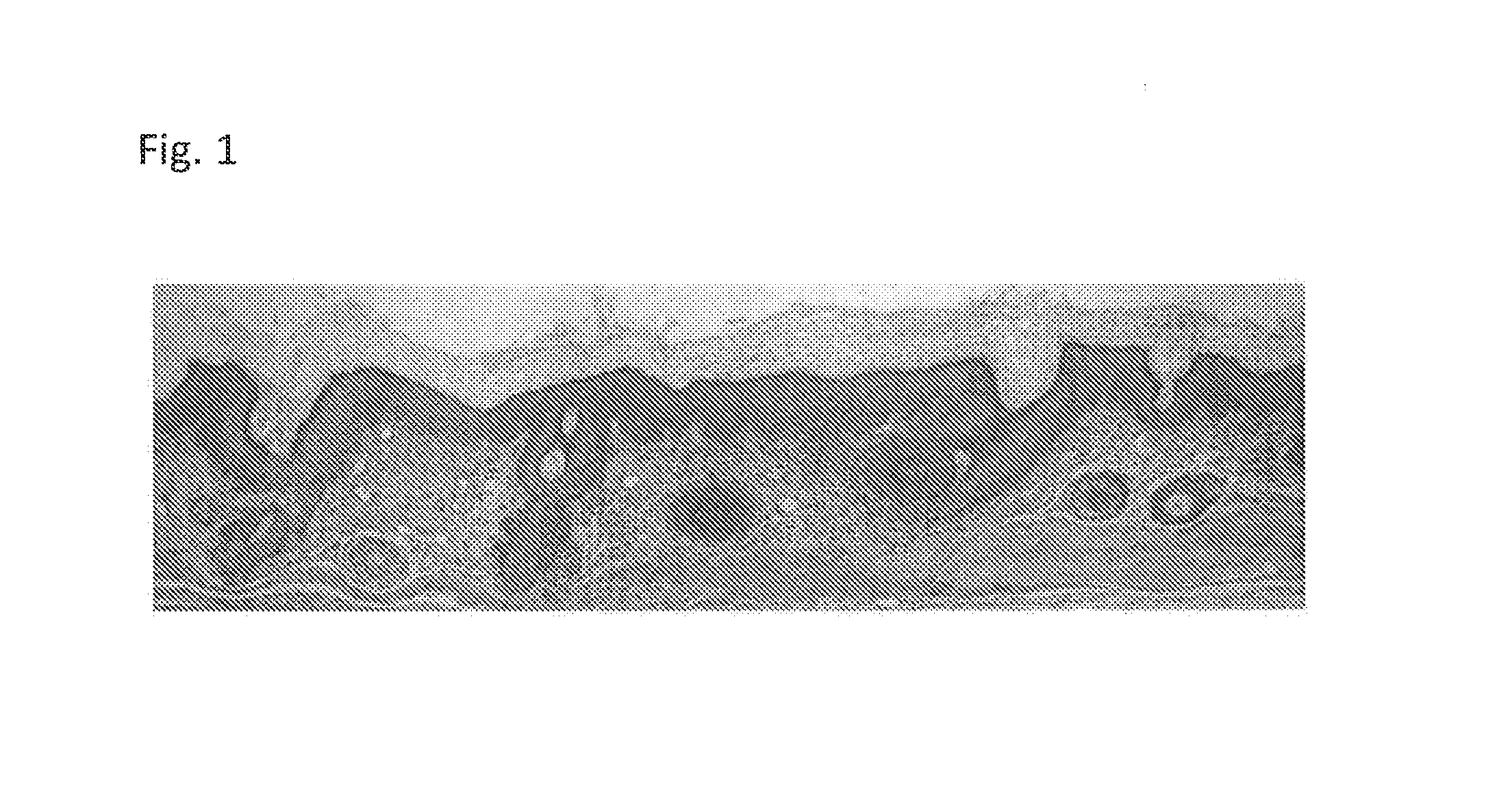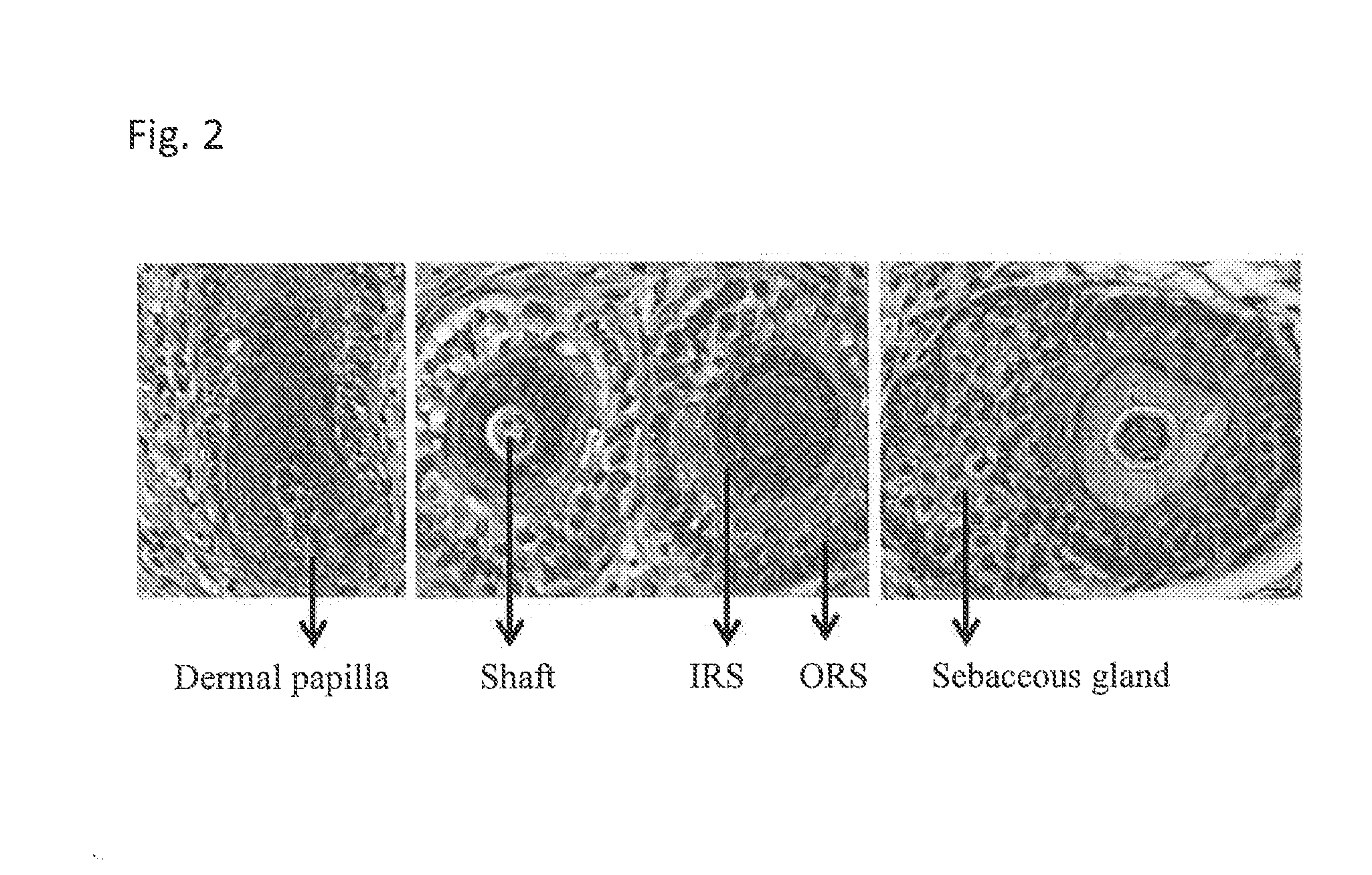Skin substitutes and methods for hair follicle neogenesis
a technology of hair follicles and skin substitutes, applied in the field of skin substitutes and methods for hair follicle neogenesis, can solve the problems of limited patient use, skin substitutes that cannot perform all the functions of normal skin, and cells susceptible to loss through minor trauma and damage through ultraviolet ligh
- Summary
- Abstract
- Description
- Claims
- Application Information
AI Technical Summary
Benefits of technology
Problems solved by technology
Method used
Image
Examples
example 1
[0163]Human DP cells isolated from temporal scalp dermis (Promocell, Heidelberg, Germany) from one male and five female donors were propagated in vitro according to methods described below. Alkaline phosphatase activity, a DP marker which correlates with hair-inducing capacity (Ohyama et al., 2013), was measured in vitro using the BCIP / NBT substrate (Sigma-Aldrich, St. Louis, Mo.) on passage 5 DP cells. To screen for trichogenicity, the reconstitution described in Zheng et al., 2005, and Kang et al., 2012 was used with minor modifications.
[0164]Human DP cells induced HFs when grown as spheroids, but not as monolayers, when coinjected with mouse epidermal aggregates in a reconstitution assay (Table 1), similar to the results of others (Kang et al, 2012). Skin substitutes (of which DECs are one type) constructed with human DP cells and human neonatal foreskin keratinocytes (NFKs) were grafted onto female nude mice. Eight weeks after grafting, HFs were observed in mice grafted with hum...
example 2
[0176]Studies were done using human dermal papilla cells grown from the temporal scalp of 6 individuals (HDP47, HDP44, HDP41, HDP43, HDP60, and HDP52) and human dermal papilla cells grown from the occipital scalp from 7 individuals (1-7). All cells were combined with human foreskin keratinocytes and rat collagen type I as described as in Example 1. The alkaline phosphatase activity of cells was measured in monolayer cultures before grafting.
[0177]Table 2 shows the results of the grafting experiments comparing human dermal papilla cells isolated from the temporal versus occipital scalp.
[0178]The second column in Table 2 shows the number of grafts in which the epidermis showed a typical human epidermal morphology by H&E staining. Dermal papilla cells from the temporal scalp supported the development of the human keratinocytes into a stratified squamous epithelium much better than those from the occipital scalp. In many grafts with occipital dermal papilla cells, the mouse keratinocyte...
example 3
[0181]Grafted dermal-epidermal composites constructed from human dermal and epidermal cells (neural crest-derived human dermal papilla cells from temporal scalp dermis and neonatal foreskin epidermal cells) were evaluated 8, 12, and 15 weeks after grafting into nude mice. FIG. 13 provides H&E stain showing a hair shaft emerging from the infundibulum of a human hair follicle in a construct 8 weeks after grafting. FIG. 14 is a dermal-epidermal composite photographed under a light microscope after 10 weeks. Hair shafts can be seen emerging from the grafted region. FIG. 15A provides a representative graft with hair shafts visible 12 weeks after grafting, while FIG. 15B provides a magnified view showing the presence of pigmented hair shafts.
[0182]FIGS. 16A-C show that different hair follicle stages could be detected in grafts after 15 weeks. The grafts containing dermal papilla cells grown in monolayers, and those grown as spheroids, had telogen hair follicles, confirmed by club-like app...
PUM
| Property | Measurement | Unit |
|---|---|---|
| diameter | aaaaa | aaaaa |
| diameter | aaaaa | aaaaa |
| temperature | aaaaa | aaaaa |
Abstract
Description
Claims
Application Information
 Login to View More
Login to View More - R&D
- Intellectual Property
- Life Sciences
- Materials
- Tech Scout
- Unparalleled Data Quality
- Higher Quality Content
- 60% Fewer Hallucinations
Browse by: Latest US Patents, China's latest patents, Technical Efficacy Thesaurus, Application Domain, Technology Topic, Popular Technical Reports.
© 2025 PatSnap. All rights reserved.Legal|Privacy policy|Modern Slavery Act Transparency Statement|Sitemap|About US| Contact US: help@patsnap.com



